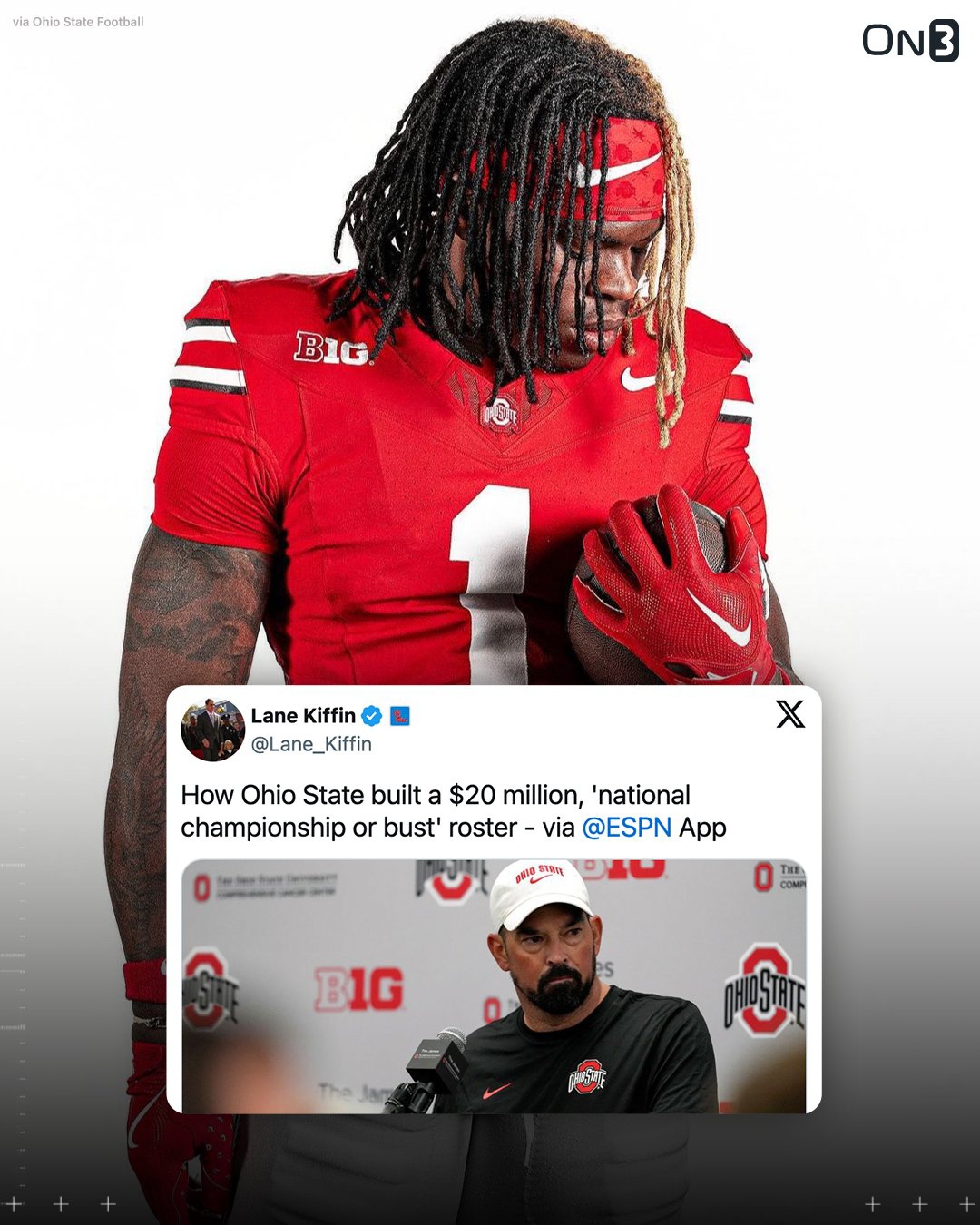Lane Kiffin’s Tweet on Ohio State’s $20 Million Roster: A Message or a Complaint?
Ole Miss head coach Lane Kiffin is no stranger to stirring the pot on social media. Whether he’s trolling rivals, dropping cryptic messages, or simply sharing his thoughts on the state of college football, his Twitter activity always gets people talking.
His latest viral tweet? Sharing an ESPN article titled “How Ohio State Built a $20 Million, ‘National Championship or Bust’ Roster,” followed by a skull emoji (💀).
At first glance, it might seem like Kiffin was just pointing out an interesting read. But knowing his history, there’s usually more to his posts than meets the eye. Was this a shot at Ohio State? A jab at the current NIL (Name, Image, and Likeness) landscape? Or perhaps a not-so-subtle message to the Ole Miss administration and collective? Whatever the case, it’s clear that Kiffin is once again using social media to spark a conversation—and the college football world is listening.
The NIL Era and College Football’s Arms Race
The article Kiffin shared dives into how Ohio State has leveraged NIL money to build a roster that is essentially “national championship or bust.” It highlights the increasing financial investment needed to compete at the highest level, a reality that has drastically changed the sport in the last few years.
When NIL was introduced, many believed it would provide athletes with fair compensation for their name and brand. However, it has quickly turned into an arms race where collectives funnel massive amounts of money to secure and retain top talent. Schools like Ohio State, Georgia, Alabama, and Texas have embraced this reality, while others—either due to a lack of resources or philosophical differences—are struggling to keep up.
Lane Kiffin has never been shy about voicing his thoughts on NIL. He’s openly said that college football is now “pay-for-play” and has frequently mentioned that the programs with the biggest NIL war chests have a significant advantage. By tweeting out this article, he may be reinforcing that idea—suggesting that schools like Ohio State have set a new standard that others will have to meet if they want to compete for championships.
Is Kiffin Sending a Message to Ole Miss?
If you read between the lines, Kiffin’s tweet could also be directed at his own program. While Ole Miss has been aggressive in using the transfer portal to upgrade its roster, it’s no secret that they don’t have the same financial firepower as programs like Ohio State or Texas A&M.
Last season, the Ole Miss collective did a solid job bringing in talent, but was it enough to build a “national championship or bust” roster? Probably not. The Rebels finished with an 8-4 record, a respectable season, but one that felt like a missed opportunity given the talent on hand. If Kiffin believes Ole Miss needs to step up its NIL game, this tweet could be his way of making that clear without directly calling out the administration or boosters.
Coaches aren’t always in control of NIL funds—that’s up to collectives and donors. But a coach of Kiffin’s stature has influence. If he wants Ole Miss to compete at the highest level, he knows that increasing NIL support is crucial. His tweet could be a subtle way of urging the collective and fan base to rally more resources.
A Warning to the Rest of College Football?
Beyond just Ole Miss, Kiffin’s tweet may also serve as a warning about where the sport is headed. If a program like Ohio State is now spending $20 million to assemble a roster capable of competing for a national championship, what does that mean for the rest of college football?
For years, Kiffin has argued that NIL and the transfer portal have turned the sport into professional free agency. His concern isn’t necessarily that players are making money—he’s been supportive of NIL in that regard—but rather that the current system lacks regulation. With no salary cap or revenue-sharing model, the programs with the most money will continue to dominate while others struggle to keep up.
His tweet could be his way of highlighting this disparity. If a team like Ole Miss, which operates in the same conference as Alabama and Georgia, doesn’t have the same financial resources, how can they realistically expect to compete for an SEC or national title?
What’s Next for Ole Miss and Kiffin?
Regardless of the intent behind Kiffin’s tweet, it has reignited the conversation about money in college football. For Ole Miss, the question now is: Can they step up their NIL game to compete with the big dogs?
If Kiffin stays at Ole Miss long-term, it’s clear he will push for the program to do everything possible to close the financial gap. But if the Rebels don’t increase their NIL spending, will he eventually look for a job at a school that can offer him a “$20 million roster”? That’s a question Ole Miss fans don’t want to think about, but in today’s college football landscape, money talks.
At the end of the day, Kiffin’s tweet is more than just a casual share—it’s a statement. Whether aimed at his own program, the NCAA, or college football as a whole, the message is clear: if you want to compete for a championship, you’d better be willing to pay for it.
And right now, Ohio State is proving just how true that is.
